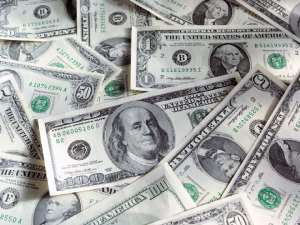
Ending the greenback's reserve-currency role will raise savings and make U.S. companies more competitive.
For more than three decades we have called attention on this page to what we called the “reserve-currency curse.” Since some politicians and economists have recently insisted that the dollar's official role as the world's reserve currency is instead a great blessing, it is time to revisit the issue.
The 1922 Genoa conference, which was intended to supervise Europe's post-World War I financial reconstruction, recommended “some means of economizing the use of gold by maintaining reserves in the form of foreign balances”—initially pound-sterling and dollar IOUs. This established the interwar “gold exchange standard.”
A decade later Jacques Rueff, an influential French economist, explained the result of this profound change from the classical gold standard. When a foreign monetary authority accepts claims denominated in dollars to settle its balance-of-payments deficits instead of gold, purchasing power “has simply been duplicated.” If the Banque de France counts among its reserves dollar claims (and not just gold and French francs)—for example a Banque de France deposit in a New York bank—this increases the money supply in France but without reducing the money supply of the U.S. So both countries can use these dollar assets to grant credit. “As a result,” Rueff said, “the gold-exchange standard was one of the major causes of the wave of speculation that culminated in the September 1929 crisis.” A vast expansion of dollar reserves had inflated the prices of stocks and commodities; their contraction deflated both.
The gold-exchange standard's demand-duplicating feature, based on the dollar's reserve-currency role, was again enshrined in the 1944 Bretton Woods agreement. What ensued was an unprecedented expansion of official dollar reserves, and the consumer price level in the U.S. and elsewhere roughly doubled. Foreign governments holding dollars increasingly demanded gold before the U.S. finally suspended gold payments in 1971.
The economic crisis of 2008-09 was similar to the crisis that triggered the Great Depression. This time, foreign monetary authorities had purchased trillions of dollars in U.S. public debt, including nearly $1 trillion in mortgage-backed securities issued by two government-sponsored enterprises, Fannie Mae and Freddie Mac. The foreign holdings of dollars were promptly returned to the dollar market, an example of demand duplication. This helped fuel a boom-and-bust in foreign markets and U.S. housing prices. The global excess credit creation also spilled over to commodity markets, in particular causing the world price of crude oil (which is denominated in dollars) to spike to $150 a barrel.
Perhaps surprisingly, given Keynes 's central role in authoring the reserve-currency system, some American Keynesians such as Kenneth Austin, a monetary economist at the U.S. Treasury; Jared Bernstein, an economic adviser to Vice President Joe Biden ; and Michael Pettis, a Beijing-based economist at the Carnegie Endowment, have expressed concern about the growing burden of the dollar's status as the world's reserve currency. For example, Mr. Bernstein argued in a New York Times op-ed article that “what was once a privilege is now a burden, undermining job growth, pumping up budget and trade deficits and inflating financial bubbles.” He urged that, “To get the American economy on track, the government needs to drop its commitment to maintaining the dollar's reserve-currency status.”
Meanwhile, a number of conservatives, such as Bryan Riley and William Wilson at the Heritage Foundation, James Pethokoukis at the American Enterprise Institute and Ramesh Ponnuru at National Review are fiercely defending the dollar's reserve-currency role. Messrs. Riley and Wilson claim that “The largest benefit has been 'seignorage,' which means that foreigners must sell real goods and services or ownership of the real capital stock to add to their dollar reserve holdings.”
This was exactly what Keynes and other British monetary experts promoted in the 1922 Genoa agreement: a means by which to finance systemic balance-of-payments deficits, forestall their settlement or repayment and put off demands for repayment in gold of Britain's enormous debts resulting from financing World War I on central bank and foreign credit. Similarly, the dollar's “exorbitant privilege” enabled the U.S. to finance government deficit spending more cheaply.
But we have since learned a great deal that Keynes did not take into consideration. As Robert Mundell noted in “Monetary Theory” (1971), “The Keynesian model is a short run model of a closed economy, dominated by pessimistic expectations and rigid wages,” a model not relevant to modern economies. In working out a “more general theory of interest, inflation, and growth of the world economy,” Mr. Mundell and others learned a great deal from Rueff, who was the master and professor of the monetary approach to the balance of payments.
Those lessons are reflected in the recent writings of Keynesians such as Mr. Austin, who has outlined what he calls the “iron identities” of international payments, which flow from the fact that global “current accounts, global capital accounts, and global net reserve sales, must (and do) sum to zero.” This means that a trillion-dollar purchase, say, of U.S. public debt by the People's Bank of China entails an equal, simultaneous increase in U.S. combined deficits in the current and capital accounts. The iron identities necessarily link official dollar-reserve expansion to the declining U.S. investment position.
The total U.S. international investment position declined from net foreign assets worth about 10% of gross domestic product in 1976 to minus-30% of GDP in 2013—while the books of U.S. private residents went from 10% of U.S. GDP in 1976 down to balance with the rest of the world in 2013. The entire decline in the U.S. net international investment position was due to federal borrowing from foreign monetary authorities—i.e., government deficit-financing through the dollar's official reserve-currency role.
Ending the dollar's reserve-currency role will limit deficit financing, increase net national savings and release resources to U.S. companies and their employees in order to remain competitive with the rest of the world.
Messrs. Riley and Wilson argue that “no other global currency is ready to replace the U.S. dollar.” That is true of other paper and credit currencies, but the world's monetary authorities still hold nearly 900 million ounces of gold, which is enough to restore, at the appropriate parity, the classical gold standard: the least imperfect monetary system of history.
Messrs. Lehrman and Mueller are principals of LBMC LLC, an economic and financial market consulting firm. Mr. Lehrman is the author of “The True Gold Standard: A Monetary Reform Plan Without Official Reserve Currencies” (TLI Books, 2012). Mr. Mueller is the author of “Redeeming Economics: Rediscovering the Missing Element” (ISI Books, 2014).




 Pointing out the ills of NPP government not enough; tell us what you can do — Mi...
Pointing out the ills of NPP government not enough; tell us what you can do — Mi...
 April 27: Cedi sells at GHS13.78 to $1, GHS13.18 on BoG interbank
April 27: Cedi sells at GHS13.78 to $1, GHS13.18 on BoG interbank
 Worry about the furniture problem in basic schools; not how to paint schools in ...
Worry about the furniture problem in basic schools; not how to paint schools in ...
 Ramaphosa lauds ANC record as S.Africa celebrates democracy
Ramaphosa lauds ANC record as S.Africa celebrates democracy
 Ghana needs new counter-terrorism Act to tackle radicalised youth – CISA
Ghana needs new counter-terrorism Act to tackle radicalised youth – CISA
 Kumasi Central Prison triple its capacity to 1800 inmates
Kumasi Central Prison triple its capacity to 1800 inmates
 By-election: Ejisu is destined for NPP – Ahiagbah
By-election: Ejisu is destined for NPP – Ahiagbah
 Don't travel to volatile regions in northern Mali — Ministry of Foreign Affair t...
Don't travel to volatile regions in northern Mali — Ministry of Foreign Affair t...
 ILO’s claim of depleting reserves false, we have funds to pay pensions — SSNIT
ILO’s claim of depleting reserves false, we have funds to pay pensions — SSNIT
 Benin police fire tear gas to break up union protest
Benin police fire tear gas to break up union protest
